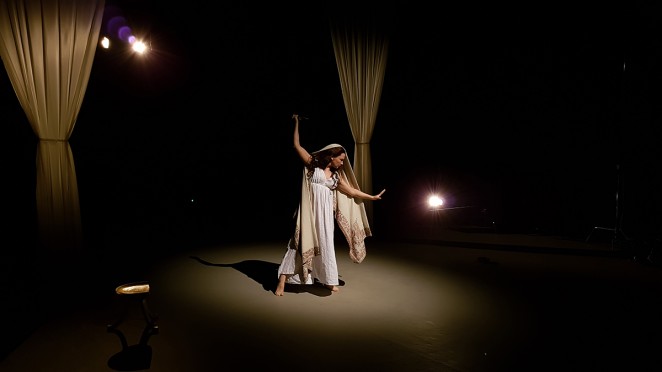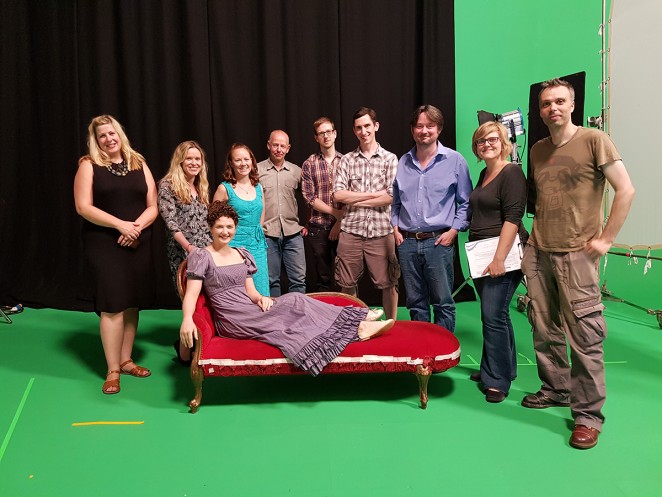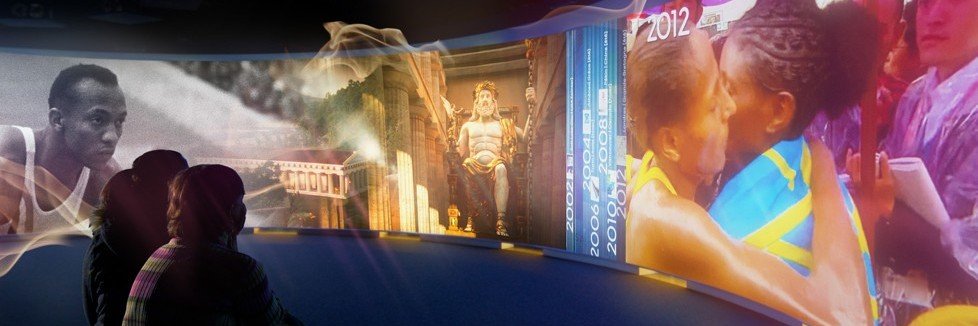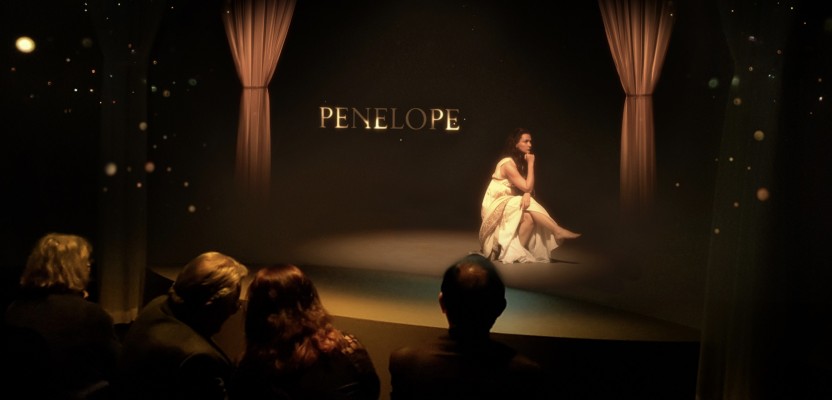Centre Screen have been blown away by the feedback received from visitors and critics in regards to our most recent project at the National Maritime Museum’s exhibition “Emma Hamilton: Seduction and Celebrity”. She was one of the most iconic women of her time, her life was said to be a real costume drama and so being involved in retelling her extraordinary story through immersive projections and newly created musical scores has not been without its challenges.
We worked with exhibition designers Hara Clark and National Maritime Museum’s internal hardware specialists to produce a number of AV installations that help tell Emma’s story for the artist, politician and pioneer that history has often forgotten and we feel that our actress, Amelia captured the tone of the exhibition perfectly.
We have been speaking to Interpretation Curator, Sarah Wood about how it was to work on the project along side us, her own views on some of the challenges we faced in creating this exhibition and of course her favourite aspects of working on Seduction and Celebrity…
What was your favourite part of the production experience?
Attending the filming and audio recordings were my favourite aspects of developing AV content. It really felt like a huge turning point in an ambitious project and a moment where ideas started to become a reality. It was exciting working with some fabulous actors who skilfully brought characters to life for audio extracts of key letters in the exhibition. Above all it was great finding and working with ‘our Emma’. The lovely Amelia starred as Emma in two major audio visual interventions for the show: an extensive and artistic performances of The Attitudes, and a dramatic imagining of the love letters written between Emma and Nelson. Being present at the filming of these aspects of the show was great fun.
Which exhibit did you most enjoy working on?
I loved working on all aspects of the AV for ‘Seduction and Celebrity’ but developing ‘The Attitudes’ was the most challenging but also rewarding – we’ve had a really positive response from visitors and staff about the final product.
At the museum, we extensively researched the attitudes. We looked at first-hand accounts of how the Attitudes were received by 18th century audiences; we studied prints and drawings of the different gestures, props, costume and poses required to piece together an interpretation of what this (then) new and radical form of performance art would have been like. Then, working with Centre Screen we embarked on a series of technical challenges about how to make this an immersive experience as a centrepiece for the exhibition experiences in a large circular space in the centre of the exhibition space.

What were the technical challenges of the project?
There were quite a few technical challenges for the project that were fun to work through.
Working out how to make Emma’s performance feel intimate yet dramatic for our audiences was key. This took a lot of technical wizardry, a lot of time and conversations and testing. We went through several iterations of how we would construct, film and project the experience, experimenting with different projection spaces and styles before arriving on our final scheme.
What surprised you the most about the filming process?
I hadn’t ever worked with green screen technology before and it was really interesting to see how that process worked on the shoot and how the magic of post-production brought it to life. The sheer scale of the set up needed to film in green screen and also to create the simple but dramatic lighting and staging for the Attitudes was really interesting.

What did you learn from the experience?
I learnt just how much technical skill is involved, from the filming process to post production to on site-installation. Large-scale audio visual elements of exhibitions require a huge group effort and expertise from across the museum and everyone at Centre Screen too: photography, choreography, digital and graphic design, costume, hair and make-up etc.
It also surprised me how much maths was involved in trying to map digital elements into physical spaces We had to plan a lot for projecting the attitudes in to and on to a circular wall, and on site installation was a complex job to fine tune. We also had to plan how a digital projection of Emma reading love letters could feel like a realistically scaled extension of the physical gallery space. There was a lot of discussion and technical planning about angles and spatial reasoning.




